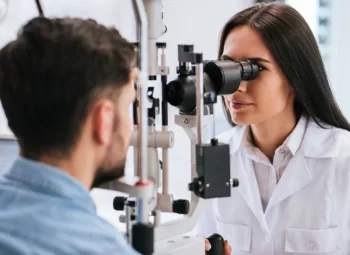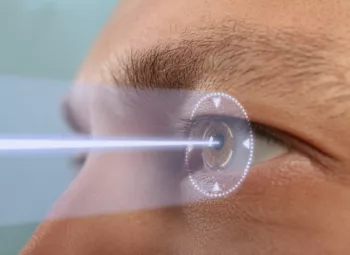
Types of LASIK for Different Refractive Errors
Do you use eye glasses or contacts to help you see better? Refractive errors such as myopia (nearsightedness), hyperopia (farsightedness), and astigmatism cause nearly 75% of American adults to use glasses or contacts. Many of the individuals who suffer from these vision problems turn to LASIK eye surgery as an immediate and permanent solution. It is the most commonly performed refractive procedure, but many people are surprised to learn that there are several types of LASIK surgery.
4 Types of Laser Vision Correction Surgery
Depending on what refractive error you are experiencing, one type of LASIK eye surgery might be better for you than another. The best way to determine what procedure is best for you is by scheduling a consultation with an experienced LASIK eye surgeon.
Conventional LASIK
Conventional LASIK is a three-step procedure that involves an specially-trained eye surgeon using a microkeratome to create a thin flap in the cornea. The flap is folded back so a computer-guided Excimer laser gently removed a thin layer of tissue from the corneal surface. The laser vaporizes the tissue away to microscopically reshape your cornea. The flap is then replaced. The flap re-adheres to its original position over time. The procedure is quick and painless.
Custom LASIK
Custom LASIK is a type of LASIK eye surgery that uses Wavefront technology to address a vision issue other than refractive errors. These issues might be:
- decreased contrast sensitivity or night vision
- ghosting (“double” vision)
- starbursts
- glare
- shadows
- Halos
The benefits of CustomLASIK (CustomVue) include higher chance of seeing 20/20; the ability to treat people with larger pupils; reduced frequency of night vision problems following treatment; and clearer, crisper results compared to treatments performed without CustomLASIK.
IntraLase
IntraLase is an “all-laser” version of LASIK. With IntraLase eye surgery, instead of using a microkeratome to create the corneal flap, a laser is used. The precision and control provided by IntraLase makes this procedure an option for those who have been previously disqualified for conventional LASIK due to thin, steep, or flat corneas.
Photorefractive Keratectomy (PRK)
PRK is a variation of conventional LASIK that does not require the creation of a cornea flap. Surface skin cells of the cornea are gently removed, then the cornea is reshaped by the excimer laser. The skin cells grow back over the corneal surface in three to four days. Some people are better candidates for PRK based upon corneal thickness and epithelial health.
Schedule a Consultation to Find out What Type of LASIK is Best for You
NeoVision Eye Center has been Union City’s choice for LASIK since 1997. We work to provide the absolute best vision services to each and every one of our patients in the San Francisco Bay Area. A combination of expertise, technology, safety, and patient care is what sets us apart from other LASIK providers.
If you are looking to leave your glasses or contacts behind, schedule a consultation at NeoVision today. We’ll help determine if you are a candidate for LASIK and which type is right for you.





